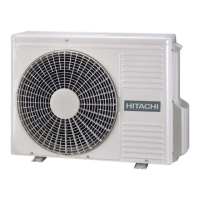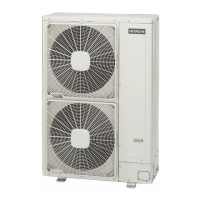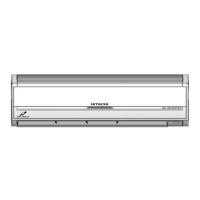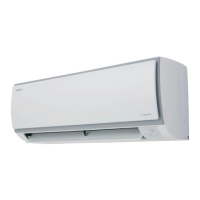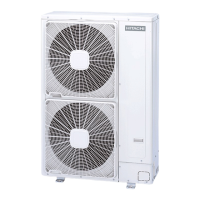14.1.1 Piping materials
1 Prepare locally-supplied copper pipes.
2 Select the piping size with the correct thickness and correct
material which can have sufcient pressure strength.
3 Select clean copper pipes. Make sure there is no dust and
moisture inside. Blow the inside of the pipes with oxygen free
nitrogen to remove any dust and foreign materials before con-
necting pipes.
4 After connecting the refrigerant piping, seal the open space
between Knockout hole and refrigerant pipes by using insula-
tion material as shown bellow:
Insulation material
Field-supplied
Insulation material
Insulation material
Unit
side
NOTE
• A system with no moisture or oil contamination will give maxi-
mum performance and lifecycle compared to that of a poorly
prepared system. Take particular care to ensure all copper
piping is clean and dry internally.
• There is no refrigerant in the cycle of the indoor unit.
CAUTION
• Cap the end of the pipe when pipe is to be inserted through
a hole.
• Do not put pipes on the ground directly without a cap or vinyl
tape at the end of the pipe.
• If piping installation is not completed until next day or over
a longer period of time, braze off the ends of the piping and
charge with oxygen free nitrogen through a Schrader valve
type access tting to prevent moisture and particle contami-
nation.
Insulate pipes
After connecting the refrigerant piping, seal the refrigerant pipes
by using the eld-supplied insulation material. Insulate the unions
and are-nuts at the piping connections completely. Insulate the
liquid piping and gas piping completely to avoid decreasing of
performance and dewing on the surface of the pipe.
CAUTION
• Do not use insulation material that contains NH3 because it
can damage cooper pipe material and can be a source of fu-
ture leakage.
• Completely insulate both refrigerant gas piping and liquid pi-
ping between the indoor unit(s) and the outdoor unit.
• If not insulated, dew will ocur on the piping surface.
14.1.2 Suspension of refrigerant piping
Suspend the refrigerant piping at certain points and prevent the
refrigerant piping from touching the weak part of the building such
as wall, ceiling, etc…
(If touched, abnormal sound may occur due to the vibration of the
piping. Pay special attention in case of short piping length).
1~15m
Indoor unit
Fire-proof section
treatment
Do not x the refrigerant piping directly with the metal ttings (The
refrigerant piping may expand and contract).
Some examples for suspension method are shown below.
For suspending
heavies
For piping along
the wall
For instant
installation work
14.1.3 Brazing work
CAUTION
• Use nitrogen gas for blowing during pipe brazing. If oxygen,
acetylene or uorocarbon gas is used, it will cause an explo-
sion or poisonous gas.
• A lot of oxidation lm will occur inside of tubes if no nitrogen
gas blowing is performed during brazing work. This lm will
be ecked off after operation and will circulate in the cycle,
resulting in clogged expansion valves, etc. This will cause bad
inuence to the compressor.
• Use a reducer valve when nitrogen gas blowing is performed
during brazing. The gas pressure should be maintained within
0.03 to 0.05Mpa. If a excessively high pressure is applied to a
pipe, it will cause an explosion.
14 REFRIGERANT PIPING & REFRIGERANT CHARGE
14.1 REFRIGERANT PIPING WORK
14

